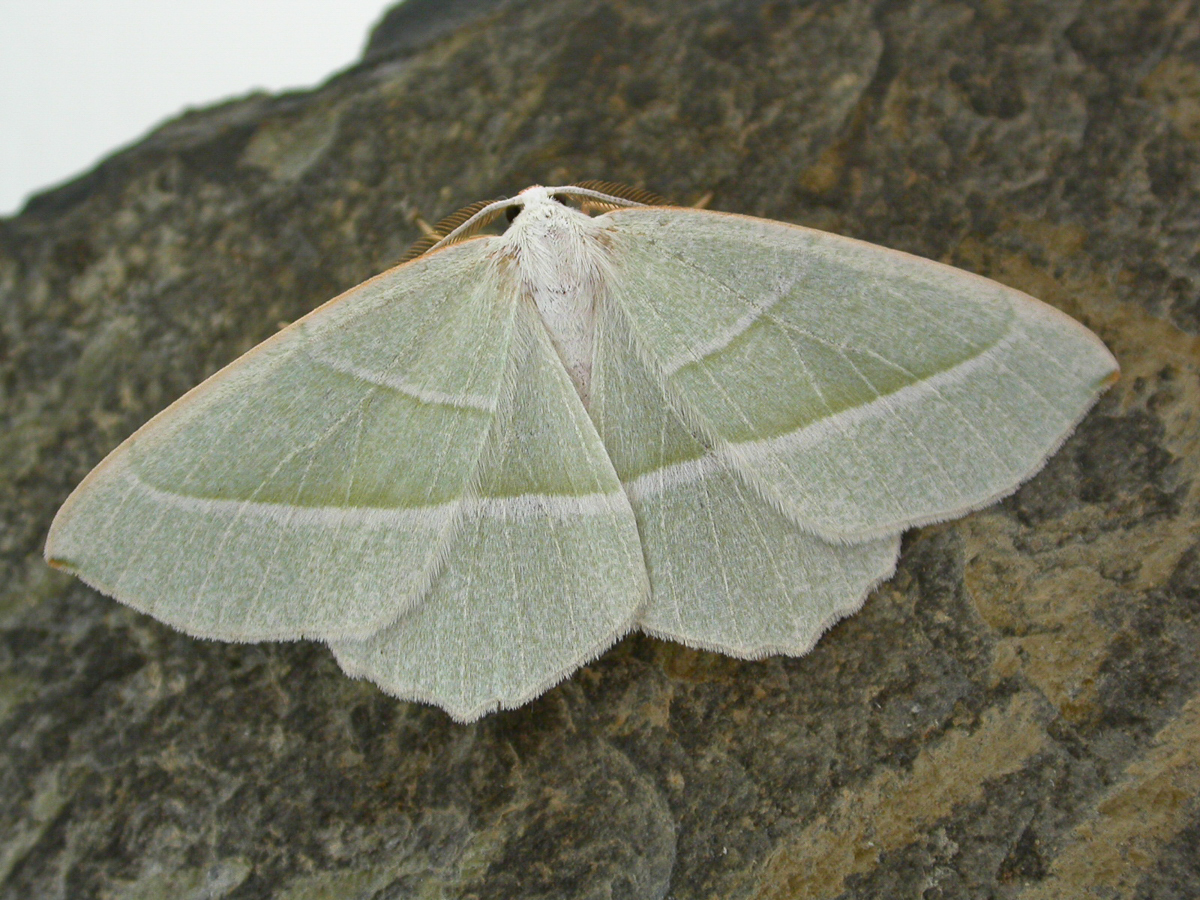
Photo © Andy Mitchell
Campaea margaritata, commonly known in the UK as the light emerald, is a moth of the family Geometridae. The species was first described by Carl Linnaeus in his 1767 12th edition of Systema Naturae. It is widely distributed throughout Europe, the Near East and North Africa. The habitat is mixed forests including parks and large gardens.
Newly emerged adults have delicately pale green wings marked with green and white fascia, two on the slightly crenulate forewing, one on the hindwing. As with most moths of this colour, the green colouration is fugitive fading over time and older specimens tend to be almost pure white. The wingspan is 42-54 mm, the female generally being considerably larger than the male. The egg is smooth, long oval, but laid with the micropyle at the top; light grey, dark-dotted, later pink with the dots deep red. The larva is grey, brown or brownish-green, commonly with whitish dots, the segment-incisions well marked.
One or two broods are produced each year and adults can be seen at any time between July and September . The larva feeds on a variety of deciduous trees, including apple, beech, birch, elm, hawthorn, hazel and oak as well as several species of Prunus. The species overwinters as a larva, feeding on the soft bark of its food plants during the winter.
This moth flies at night and is attracted to light.
Source: Wikipedia
The primary larval foodplants are Alder (Alnus glutinosa), Ash (Fraxinus excelsior), Beech (Fagus sylvatica), Blackthorn (Prunus spinosa), Broom (Cytisus scoparius), Downy Birch (Betula pubescens), elms (Ulmus spp.), Hawthorn (Crataegus monogyna), Hazel (Corylus avellana), Hornbeam (Carpinus betulus), Horse-chestnut (Aesculus hippocastanum), Juneberry (Amelanchier lamarckii), Pedunculate Oak (Quercus robur), Plum (Prunus domestica ssp. domestica), roses (Rosa spp.), Rowan (Sorbus aucuparia), Silver Birch (Betula pendula), Sweet Chestnut (Castanea sativa) and willows (Salix spp.).